Posts Tagged “Other tips & techniques”
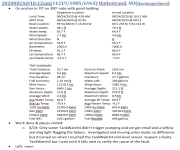
We keep a detailed ship’s log that records where we have been, what we have done, system state, and things we fix. Unlike commercial ship’s logs, that normally are hand-maintained and can’t be modified, ours is a bit primitive in that it’s just a Word document. We focus on it being easy to maintain rather…
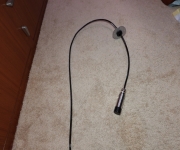
Reliable black water levels make the boat easier to operate and lower costs by reducing the number of pump-outs required. We have sufficient black water tankage to go for two weeks in normal use and, with some care, we can go much more than a month between pump outs. However, when using inaccurate level sensors,…
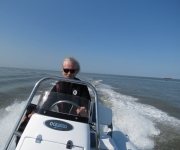
Tender selection on a small boat can be complex. Big tenders don’t fit and it’s more challenging to make multiple tenders work without giving up prohibitive amounts of deck space. Finding the “just right” compromise can be challenging. Back in 2009, we bought an AB 12VST and have used it for the intervening 9 years….

While in Brisbane, Australia in 2014 we installed a Heatstrip patio heater and just love it. A key advantage of the Heatstrip is a nice, even warmth with no red glow. You can’t tell it’s on and it doesn’t change the lighting at night. Spitfire appreciates the heater too, and usually finds a spot underneath…
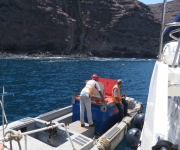
When you travel the world, the boat sometimes has to be docked in less than optimum conditions. Nobody wants to med moor against a concrete wall in a large swell and without protection. But, if you want fuel in Nuku Hiva, you’ll need to be able to safely dock in these conditions. Nobody wants to…
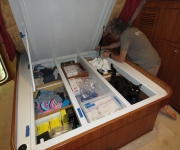
Our goal has always been to never have a trip delayed or cut short due to equipment issues. We have achieved this in 13,500 hours of operation across two boats, by keeping the vessels in a high level of service, having redundancy in equipment, and carrying a large number of spares parts. Having the right…
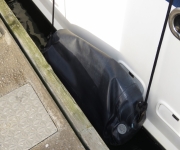
Just under three years ago, we purchased a full set of ProStock Marine fenders. We like to be well-fendered so we ended up buying just over $2,000 worth of these fenders. In the intervening three years we have been super-impressed with them. They have been used in gales up against cement walls, when fueling from…
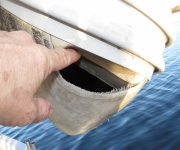
Rigid Hull Inflatable Boats (RIBs) have many advantages. They don’t mark a boat’s hull when alongside, they have sufficient buoyancy to stay afloat when completely full of water, and they are sold in large enough quantities that pricing is competitive. They have lots of downsides as well and the demise of most inflatables is slow…
On our previous boat, we were (just barely) able to remember when all mechanical systems needed service as the hours mounted and time passed. But that system broke down when we got the current boat. There are far more systems, many of the intervals vary greatly, and when running offshore, up-to-date service is even more…
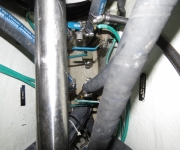
We’ve always maintained our boats with minimal bilge water and kept the bilges clean so the engine room doesn’t smell. We check the bilges as part of our regular engine room checks, so we can spot water leaks right way if the level increases, and mechanical leaks are obvious if an oily sheen forms on…
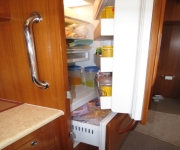
When we were deciding on equipment for the 52, one of the things we considered was replacing the standard Sub-Zero 700TCI refrigerator/freezer with one that is more energy-efficient. Home appliances, with self-defrosting freezers and ice makers, generally are designed for applications where power is plentiful. We’d heard complaints from other Nordhavn owners that the Sub-Zero…

We prefer to eat our meals, read and generally relax outdoors as much as possible. In the cool and sometimes rainy Pacific Northwest, this at times can be a challenge. But we’re motivated to make it work. On our previous boat, the covered aft deck allowed us to be outside even when rain was falling,…
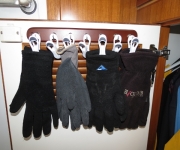
For us, one of the keys to living comfortably in the small space of a boat is to reduce clutter and keep our frequently-used items easily accessible. Reducing clutter isn’t just for appearances–it also means we can leave the dock on a moments notice without having to spend a half-hour stowing loose items. And if…
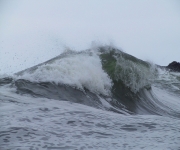
We purchased our first digital camera, a Canon PowerShot Pro90 IS, in 2002. Many of our pictures are taken from a boat, with the subject often at a distance. So we wanted a long lens to successfully get those distant shots. Since light conditions in the Pacific Northwest can be poor, and we’d often be…
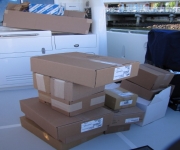
We’ve been ordering a seemingly endless number of supplies and spare parts for the boat, ranging from fuel filters to zincs to alternators to pumps, and even a spare inverter. Stowing it all has been a big job. The boat has a large amount of storage space in various lockers, bilges and other spaces, but…
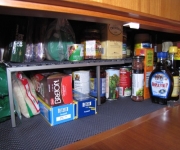
Dirona has plenty of storage space—we’ve not yet come close to filling all the lockers despite living aboard. But it is a boat, and storage space is at a premium. So we’re always looking for ways to make the most efficient use of the space we have. When we visited the yard during construction, one…

We’ve cruised with two different cats: Gremlin was 10 years old before we introduced him to boating and Spitfire was a kitten when brought him aboard several years later. Both have enjoyed being on the boat and have seemed as content afloat as on land. In our experience, cats need time to adapt to a…
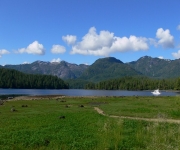
Last year, Bayliner Magazine interviewed us for a story about our travels and experiences aboard Dirona, our Bayliner 4087 (article). Soon we will take delivery of a Nordhavn 52, and turn the 4087 over to new owners. We are, of course, eager to have the Nordhavn, but are not desperate to get off the 4087….